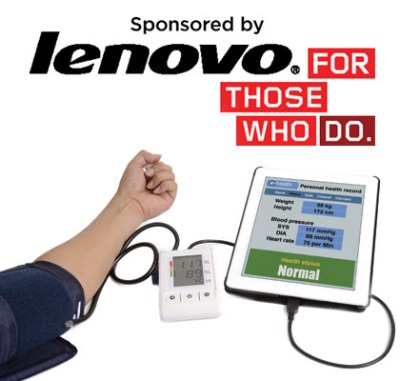A compelling case for remote health monitoring
PRIME – January 2015
By Gary M. Kaye
Editor, Tech50+ ( www.tech50plus.com )
Pay attention. This is a lot more important than your next smartphone. There’s a pretty good chance that the implications of the subject here will have an impact on you whether or not you suffer from a chronic disease such as congestive heart failure, diabetes or COPD.
Perhaps you are now – or in the foreseeable future will be– responsible for caring for a parent or loved one who suffers from one of these chronic conditions. Even if you just pay health insurance premiums this is a topic of interest.
For years we’ve talked about coverage for catastrophic medical events such as cancer, or a kidney transplant. But perhaps what we really need to focus on is the catastrophe that’s likely to occur as increasing longevity combines with the flood of 76 million aging Baby Boomers to become a tsunami of human need that will wipe out our ability to deliver affordable medical care.
No one wants to be hospitalized. I was at the recent mHealth Summit outside of Washington where there was lots of discussion of the benefits, both physically and fiscally, of staying out of a hospital. To paraphrase Steve Wogan of Hartford, Ct. -based CareCentrix, “You’re far better off at home with the germs you know than in a hospital where the germs you don’t know can kill you.”
Many of us, including myself, have had first-hand, often tragic experience with this type of situation. My dad suffered from congestive heart failure. But what killed him was hepatitis that he contracted during a hospitalization. There’s a good chance that had he been monitored at home, that series of events would not have taken place.
The future is now
Current technology means a patient can have daily interactions with a nurse practitioner or care manager using a tablet computer over the Internet. A patent can easily connect wireless scales, wireless blood pressure cuffs, wireless glucose monitors and oximeters to provide a daily snapshot of how he or she is doing. So, for example, a weight gain of several pounds over a short period of time may mean a congestive heart failure patient needs a change in medication. By monitoring that condition daily, an intervention can come before the matter escalates to a hospital readmission.
Multiple surveys have found that most of us would rather be sick and cared for at home than in a hospital, and now the numbers are starting to support the notion that there’s a financial payoff here as well. CareCentrix makes some pretty good arguments for receiving home based care. The company points out that 13.6 million people in the U.S. 65 years of age and older will be discharged from the hospital in the course of the year. Moreover, 19.6 percent of Medicare beneficiaries will be back in the hospital within 30 days of a hospitalization. Half of the patients do not see a physician after a hospital discharge. The money in unnecessary emergency room visits is an estimated $21 billion annually.
Then there’s the cost to the economy incurred by the caregivers. CareCentrix cites a $33.6 billion dollar loss in productivity attributed to employees taking care of “aged dependents.”
Peace of mind-for everyone
There’s increasing evidence that remote monitoring and home health care can help reduce these problems. According to Qualcomm Life, a recent study at the University of Torrejon in Madrid, Spain, found that by using Qualcomm’s mHealthAlert monitoring system, incorporating telemedicine and remote monitoring devices, a population of 30 COPD patients experienced 69 percent fewer hospital readmissions and 34 percent fewer emergency room visits than a non-monitored population. CareCentrix found a high patient satisfaction rate with monitoring (90-plus percent), a readmission rate that was down by 36 percent, and a cost savings to the care payer of $2.70 per member per month.
Other remote technologies are being developed to assure prescription adherence. The failure of patients to take their meds results in billions of dollars in unnecessary hospital admissions, and untold premature deaths. But simply by sending text messages over cell phones or smart phones as reminders to patients, studies have found dramatic improvements in adherence rates. And new electronic pillbox technologies are coming to market that alert a care manager when a pill is removed from the box (though they still cannot tell if the patient has actually swallowed it).
The implementation of these monitoring technologies is not going to happen overnight.There are still a lot of obstacles to widespread acceptance and deployment. But it’s encouraging to know the industry has made a start, and the near-term results look like lower costs to the health care system, and a better quality of life for the patient. Not to mention the peace of mind for legions of caregivers.
Gary Kaye is the creator of Tech50+ ( www.tech50plus.com ), the leading website covering technology from the Baby Boomer perspective. Kaye has been covering high tech for more than 30 years with outlets including NBC, ABC, CNN and Fox Business. He is a regular contributor to AARP and other websites on issues regarding the nexus of technology, seniors and baby boomers.

